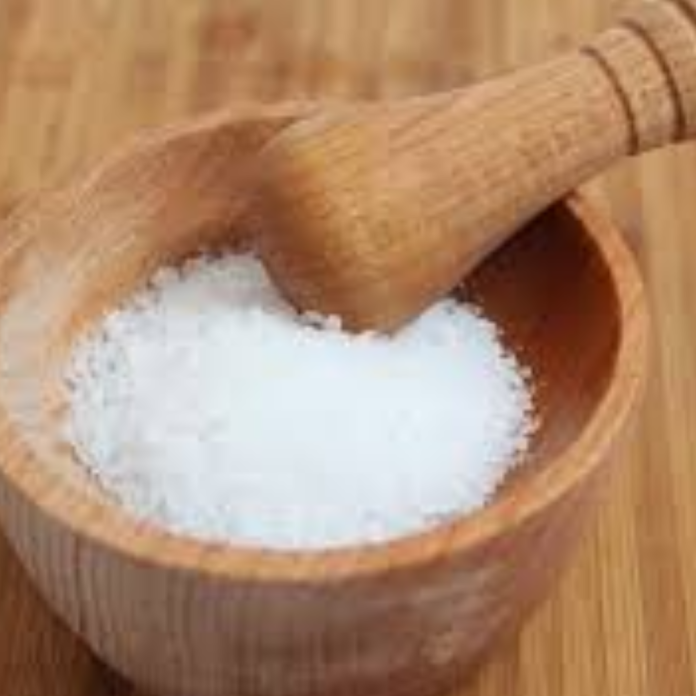Salt—our beloved, ubiquitous, and essential condiment—plays a crucial role in our health. While it’s a necessary nutrient, excessive consumption can lead to serious health issues. But defining what constitutes “too much” salt remains a point of contention among scientists.
Consistently consuming too much salt can contribute to hypertension, or high blood pressure. The World Health Organization (WHO) advises that healthy adults should limit their sodium intake to no more than two grams per day. The American Heart Association (AHA) sets a stricter cap at 2.3 grams per day, equivalent to a teaspoon of salt, claiming this amount will not raise blood pressure. Ideally, they recommend two-thirds of this limit, particularly for those already dealing with high blood pressure.
Yet, it’s surprisingly easy to exceed this limit—a cheeseburger with condiments, a can of soup, or two slices of pizza can consume your entire daily salt allowance.
Currently, the average daily sodium intake in the U.S. is 3.4 grams, and worldwide, it’s 4.3 grams, largely driven by regions in East and Central Asia, known for their flavorful and rich cuisines.
While no scientist denies the negative effects of excessive salt on blood pressure, the real debate lies in the threshold—what’s the tipping point?
What Does Salt Do to Your Body?
Table salt is made up of two charged ions: sodium and chloride. The more scrutinized of the two is sodium. Sodium prompts the body to retain or release water to maintain proper sodium levels. When sodium intake spikes, the body responds by holding onto water, increasing blood volume. This places added strain on the heart, which must work harder to pump blood, and on blood vessels, which stiffen under the pressure. Meanwhile, the kidneys work overtime to filter out the excess salt.
Over time, this chronic strain can damage the heart and kidneys, leading to conditions like kidney failure, heart disease, and stroke. Excessive salt intake may also contribute to stomach ulcers, cancer, and possibly osteoporosis, though the latter has not been consistently proven.
The Debate Over Salt
One reason salty foods are hard to limit is because our bodies are wired to crave them. Salt is essential for survival, and too little of it can lead to muscle cramps, insulin resistance, and atherosclerosis—conditions that increase the risk of stroke. However, the risk of low sodium intake is minimal in the U.S., with only 2% of people at risk of not getting enough salt.
Some researchers question the strict salt guidelines, claiming they are too stringent. A 2013 report by the Institute of Medicine (now the National Academy of Medicine) challenged the 2.3-gram limit, citing insufficient evidence for such a low threshold. This sparked what’s now known as the “salt wars.”
Franz Messerli, a professor of medicine at the University of Bern, Switzerland, believes that the salt restriction movement may be overblown. He argues that various factors—such as a person’s medical history, stress levels, occupation, and physical activity—affect how salt influences blood pressure. For instance, those with active lifestyles or who work outdoors may tolerate higher sodium intakes due to the blood-pressure-lowering effects of exercise. Messerli and other researchers claim that salt’s effect on health follows a “J-shaped curve,” where both too little and too much salt are harmful, though this theory is still debated.
Salt sensitivity, which refers to how much blood pressure rises with salt intake, also varies by individual. For example, African Americans experience higher rates of hypertension compared to whites, potentially due to genetic and socioeconomic factors.
The Need for Further Research
A large-scale, randomized controlled trial would be the best way to resolve the salt debate once and for all. However, such a study, involving a diverse group of participants over several years, presents significant challenges. Diets with reduced sodium are notoriously hard to stick to, and ethical dilemmas arise when considering settings like prisons, where meals are tightly regulated.
Meanwhile, new research is uncovering the broader impacts of salt. For example, studies have shown that salt influences immune cells and can play a role in the body’s defense mechanisms against pathogens. However, excessive salt intake can also trigger inflammation, contributing to cardiovascular problems and autoimmune diseases.
Reducing Your Salt Intake
Most of our daily sodium comes from ultra-processed foods, not from the salt we add during cooking. In fact, over 70% of sodium intake comes from processed foods, where salt acts as a preservative, stabilizer, and moisture-retainer. Even foods like bread, which don’t taste salty, can be major sources of sodium.
Considering that nearly 50% of American adults have hypertension, it’s clear that many could benefit from reducing their salt intake—even by a small amount. Reducing salt consumption could help improve overall public health, especially given the average American’s sedentary lifestyle, which increases the risk of sodium overconsumption.
Nephrologist Raeeda Gheewala emphasizes that controlling sodium intake at home is key. She advises planning meals in advance to avoid salty snacks and suggests replacing processed snacks with healthier options like fruits, vegetables, and unsalted nuts.
Salt substitutes, which replace sodium with potassium, are another option for reducing sodium intake. Potassium helps balance sodium’s effects by relaxing blood vessels. A study in China found that replacing 25% of sodium with potassium led to a 12% reduction in strokes and 13% in heart attacks.
Despite the concerns, Gheewala, Müller, and Messerli agree that moderation is key. While limiting salt intake is beneficial, occasional indulgence in salty snacks, like chips or crackers, is not something to stress over—especially if balanced with regular exercise.


